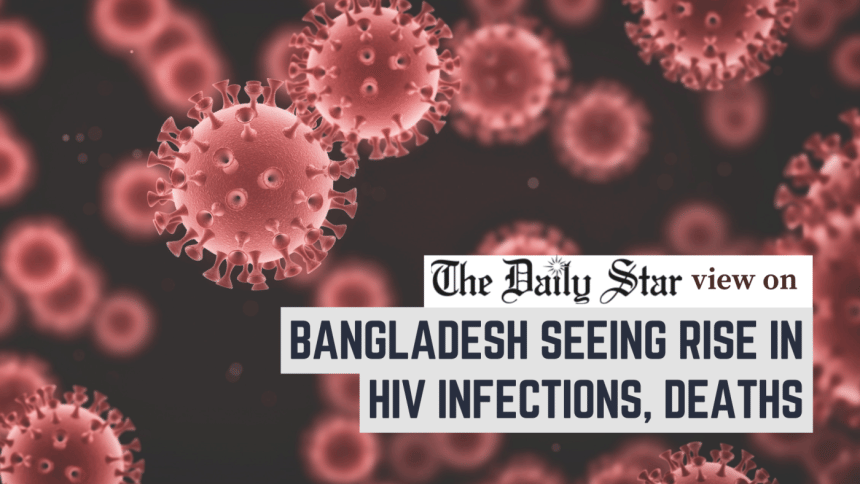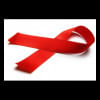Rising HIV cases demand urgent action

We are concerned about rising HIV infections and deaths in the country. While the global community has made notable progress in reducing HIV/AIDS cases over the past two decades, Bangladesh seems to be heading in the opposite direction. According to the Directorate General of Health Services (DGHS), the country recorded 1,438 HIV cases and 326 deaths in 2024, up from 1,276 cases and 266 deaths in 2023. Continuing this upward trajectory, 882 new HIV-positive cases were recorded in just the first half of 2025. Despite the growing caseload, however, preventive services remain severely disrupted, raising concerns among health experts.
Globally, HIV infections have dropped by 40 percent and AIDS-related deaths by 56 percent since 2010. Bangladesh has not been able to replicate this success. Its first case was detected in 1989, and as of 2024, the total number of recorded cases stood at 12,422 with 2,412 deaths, according to the DGHS. True, there has been an increase in testing in recent years, from just over 83,000 in 2016 to more than 16 lakh over the past decade, but the government's preventive measures have yet to match the urgency demonstrated by the increasing death toll.
The expiration of a government programme in June 2024 has severely disrupted essential services such as the distribution of condoms, needles, and syringes among key populations, including people who inject drugs, female sex workers, and transgender individuals. These groups, comprising over 3.22 lakh people, accounted for half of the HIV cases reported last year. The DGHS now relies on foreign donors to continue testing and provide medication for HIV patients at dedicated centres. However, due to funding shortages, 25 districts reportedly remain outside the coverage of these services.
For instance, the expiration of a government programme in June 2024 has severely disrupted essential services such as the distribution of condoms, needles, and syringes among key populations, including people who inject drugs, female sex workers, and transgender individuals. These groups, comprising over 3.22 lakh people, accounted for half of the HIV cases reported last year. The DGHS now relies on foreign donors to continue testing and provide medication for HIV patients at dedicated centres. However, due to funding shortages, 25 districts reportedly remain outside the coverage of these services. There are fears that inadequate funding for preventive services could lead to a further rise in the positivity rate and make it more difficult for the country to meet its target of eliminating AIDS by 2030.
Therefore, instead of relying on foreign donors, the government must invest in HIV programmes to ensure the continuation of preventive care services across all districts. The fact that 23 percent of people potentially living with HIV remain unaware of their status is a stark reminder of the gaps in our HIV prevention and awareness raising efforts. This gap must be addressed. The government must formulate a national HIV/AIDS strategy with clear goals, sustainable funding, and active community engagement. Bangladesh cannot afford to fall behind while the rest of the world moves forward in HIV prevention.

 For all latest news, follow The Daily Star's Google News channel.
For all latest news, follow The Daily Star's Google News channel. 





Comments